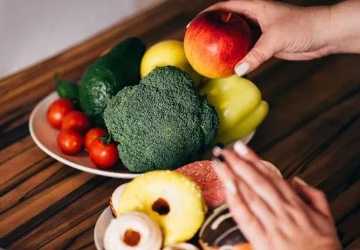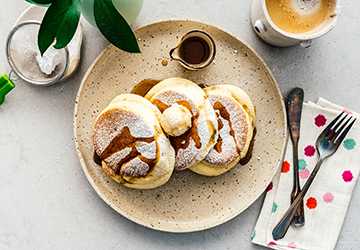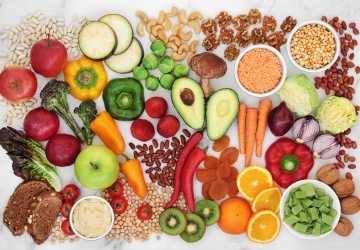Managing Type 2 Diabetes with Diet: What to Eat and Avoid
Do you have type 2 diabetes? This is a condition that millions of people live with every day, and it is sometimes the diet that is the biggest challenge. What's safe to eat? What's off-limits? These are some critical questions.
Admittedly, it is impossible to ignore your diet. If diabetes is left untreated, it can become dangerous and mess up almost every organ in your body, ranging from the heart and kidneys to the nerves.
Don't worry.
This blog post will indicate which foods are suitable for managing blood sugar and which are not.
Let's get started!
Importance of Diet in Managing Type 2 Diabetes
It is advisable to regard the diet as one more weapon in the fight against diabetes. Losing sugar is not the problem; the problem is equipping your body with the necessary tools to help it deal with sugar levels.
That is why you allow your body to regulate those glucose levels when you eat right. There will be no more swings to the extremes that are so typical for bipolar disorder.
A proper diet will assist in losing those extra pounds or stabilizing the weight. Less weight means it is easier to do all of the above and even manage diabetes.
Eating healthy doesn't just help with diabetes. It also works like a shield, protecting you from other health problems often associated with diabetes, like heart issues. It's like building a solid defence against those common health risks.

Foods to Eat and Avoid
Here is your essential list of foods to eat and what to avoid if you have diabetes:
1. Whole Grains: Your New Best Friends
Do not use white; go for brown! Whole-grain foods such as brown rice, quinoa, and oats are the way to go if you need steady blood sugar. They are also fiber-rich, which modifies glucose by preventing it from rushing into your bloodstream.
In the morning, replace your breakfast bread with oatmeal. Your body will appreciate the slow and steady energy output.
2. Veggies: The More Colorful, The Better
Vegetables are like colors on a canvas. This includes leafy greens, colorful peppers, crunchy carrots, and more. They're low in calories but packed with nutrients, making them great for people with diabetes.
Vegetables should take up at least half of your plate for every meal. This is a convenient way to get many nutrients without many carbohydrates.
3. Fruits: Nature's Candy (In Moderation)
Fruits are nature's dessert; however, moderation is the key. Berries, apples, and citrus fruits are delicious sources of vitamins and fiber to sweeten your snack. Of course, they are sweetened with natural sugar, and it is essential to consider them.
It is possible to get a crunch from a small apple or a portion of berries and still not get an insulin spike. Hear, hear, watch out for those portions!
4. Lean Proteins: Building Blocks for Better Health
Proteins, the building blocks of our body, are the friends you need to have in your corner regarding diabetes. These include chicken, fish, and beans. They assist in the repair of muscles and make you feel fuller, which is very useful in controlling body mass.
Give it a shot by barbecuing some salmon or making bean chili. The foods you like and your glucose levels will be friends.
5. Healthy Fats: Not All Fats Are Villains
Throw away the knowledge you have about fats being the deadly enemies. Avocados, nuts, and olive oil are the 'super' fats that run to defend your heart health.
Add almonds to your yogurt, or pour olive oil on the salad you intend to eat. These fats assist in the absorption of vitamins and keep you full.
6. Dairy: Calcium's Calling
Dairy is not your enemy, but being selective will help you. Choose the ones that contain little fat and no added sugar or should be non-fat. They are calcium goldmines, and there is no high blood sugar spectacle.
Plain Greek yogurt with berries is a perfect snack for diabetes. It is also rich in proteins.
7. The No-Go Zone: Foods to Avoid
Here's the reality check: Coca-Cola, Frito-Lay, and McDonald's are like gatecrashers at your blood sugar party. These troublemakers can quickly raise your glucose levels.
Instead of having a soda, choose sparkling water with a bit of lemon. Craving chips? Incidentally, they have that satisfying crunch that people crave without worrying about fattening.
So, eating a delicious meal does not have to be a thing of the past when managing diabetes. That is more about making the right decisions to live a healthy and happy life.
Now, your plate is your power; don't let those who are financially dependent on you ruin it.

Take Charge of Your Diet to Manage type 2 diabetes
It's time to rid yourself of diabetes. Just begin by changing a simple thing, such as using whole-grain bread instead of white bread or replacing a soda with sparkling water. Often, it is said that every little change counts.
Think of this as a push for 'healthy eating', but not exactly that. It's about moving forward. Mistakes happen, but don't let them stop you. Each day is a fresh start, beginning with a meal.
Isn't now the perfect time to begin? Try eating an apple instead of the chips you're used to. The above guidelines can be the first step to a healthier you.
You've got this! The decisions made in the present will benefit the individual's future self. So, what's for dinner?
Frequently Asked Questions
Q. Can I eat fruits with Type 2 diabetes?
Ans. So, what's for dinner? Absolutely! Fruit isn't off-limits. Do it wisely. Try berries, apples, and oranges.
Q. Is it okay to have occasional sweets?
Ans. It is not advisable to never eat cake because life is too short. The key is Moderation. Sometimes, you can indulge in sweet foods, but you should make it part of a balanced diet.
Q. How can I manage cravings for unhealthy foods?
Ans. Are cravings hitting hard? Don't panic! Always have ready, healthy snacks you can grab when you are hungry. A small amount of nuts or a fresh apple goes a long way.
Q. Are there specific meal plans for Type 2 diabetes?
Ans. You bet! When it comes to diabetes and meal plans, there is a whole wide world out there. They are centered on balancing your meals with good proteins, fibers, and healthy fats.





